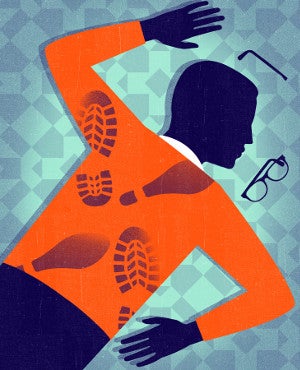LENS Arts, Humanities, and Social Sciences
Beating Bullying
Researching Effective Programs to Combat Aggression
 IMAGE: THEISPOT.COM/NEIL WEBB
IMAGE: THEISPOT.COM/NEIL WEBBSchool-aged bullying—long viewed as an ugly but inevitable part of childhood—is now considered a critical public health issue that can begin as early as preschool and have long-term consequences, including depression.
Approximately 18 to 31 percent of children and youth experience school-based bullying, while 7 to 15 percent of youth also report cyber victimization, according to a 2016 report on bullying for the National Academies of Sciences, Engineering and Medicine. Its authors included Case Western Reserve violence researcher Daniel Flannery, PhD.
But Flannery—the Semi J. and Ruth W. Begun Professor and director of the Dr. Semi J. and Ruth W. Begun Center for Violence Prevention, Research and Education in the Jack, Joseph and Morton Mandel School of Applied Social Sciences—said children and adults can take steps to combat bullying.
For example, if technology is part of the problem, it also can be part of the solution. Flannery’s colleague Jane Timmons-Mitchell, PhD, has shown that a pilot online anti-bullying program called StandUp, deliverable in classrooms under adult supervision, can reduce the odds that students will stand by passively while others are bullied. It works to improve social skills in general and make children more aware of the dangers of bullying.

Daniel Flannery, professor
In addition, Flannery said the most effective overall approach is to combine broad-based anti-bullying programs like StandUp, which are designed to reduce the risk of bullying among all youths, with more focused initiatives aimed at kids who already are being harassed.





